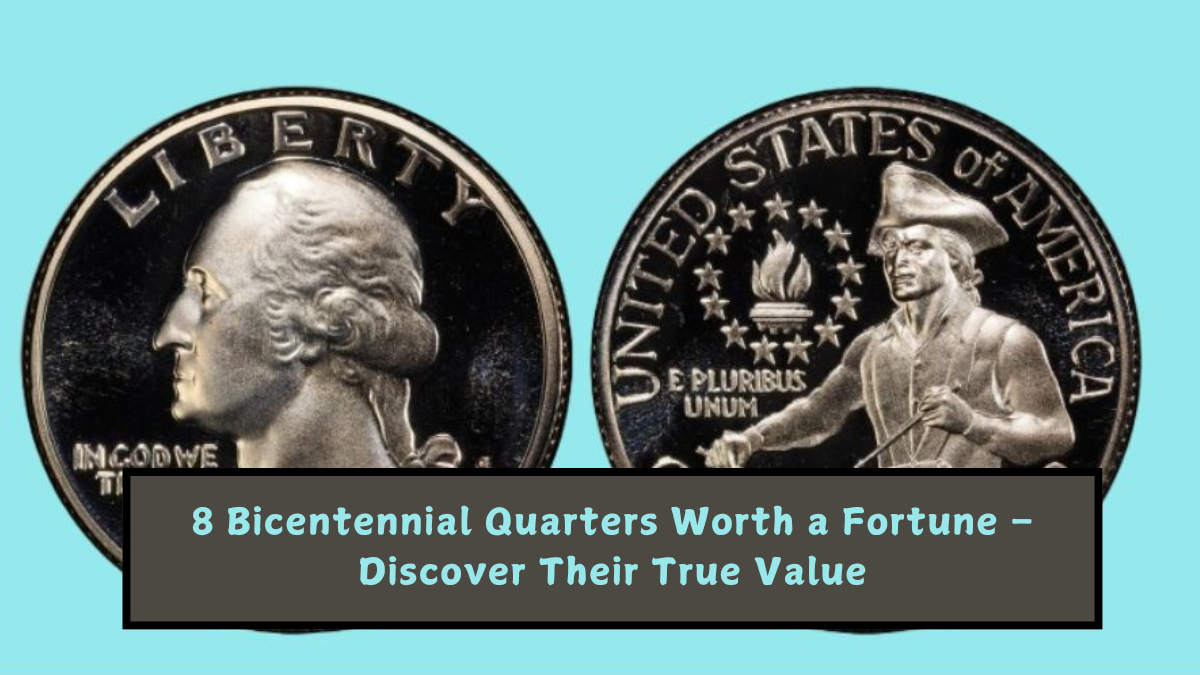The Bicentennial quarters, released in 1975 and 1976, were a special issue commemorating America’s 200th birthday. Minted with designs featuring colonial drummers and dual-date inscriptions of “1776–1976,” these coins hold significant historical value.
While many circulated quarters remain in everyday use, others have become rare and valuable collectibles. Their designs, silver content, and minting errors have contributed to their rising worth. In this guide, we’ll explore the different types of Bicentennial quarters and how to identify their true value.
Historical Significance of Bicentennial Quarters
The Bicentennial quarter was released to celebrate America’s 200th anniversary, marking 200 years since the country’s independence. On the reverse side of the coin, you’ll find a colonial drummer playing the fife, surrounded by 13 stars symbolizing the original colonies. These coins symbolize a significant moment in American history, and their unique designs have made them highly desirable among collectors.
Understanding Bicentennial Quarter Varieties
There are several types of Bicentennial quarters, each carrying distinct characteristics that contribute to their value.
Mint Markless Quarters
The mintless variety of quarters were produced at the Philadelphia Mint, and they make up the majority of Bicentennial quarters in circulation. However, those in pristine condition (graded MS-67) can still fetch up to $500. Collectors often seek out these coins for their excellent preservation and lack of wear.
Silver Composition Quarters
A limited number of Bicentennial quarters were struck with a 40% silver composition. These coins contain 40% silver mixed with copper, which is distinguishable by their weight and edge. Silver quarters in uncirculated condition are highly sought after, with values ranging from $300 to $1,000 depending on the condition.
| Feature | Silver Quarters | Regular Quarters |
|---|---|---|
| Composition | 40% silver, 60% copper | Copper-nickel clad |
| Weight | 6.25 grams | 5.67 grams |
| Edge Appearance | Minimal copper showing | Copper layers visible |
Proof Editions
Proof Bicentennial quarters are characterized by their highly detailed and mirror-like finish. These coins are often preserved in protective cases and are highly sought after. Depending on the coin’s condition and rarity, proof editions can sell between $200 to $800.
Also Read: 11 Rare Coins That Sold for Over $1 Million
Rare Minting Errors in Bicentennial Quarters
One of the most exciting aspects of Bicentennial quarters is their potential for minting errors, which can significantly increase their value.
Double Die Errors
Double die errors occur when parts of the coin’s design are doubled, leading to misalignment. These errors can boost the coin’s value from $1,000 to $5,000, depending on the severity of the double strike and the coin’s condition.
Clipped Planchet
Coins with clipped planchets have sections that were accidentally cut out during minting. These coins can sell anywhere from $200 to $600, depending on how much of the planchet is missing.
Off-Center Strikes
Off-center strike errors happen when the coin’s design isn’t perfectly aligned. These dramatic misalignments can be worth several hundred dollars, making them a valuable addition to any collection.
Condition and Rarity
The value of a Bicentennial quarter is greatly influenced by its condition. Quarters that feature clear and detailed impressions on Monticello, the home on the reverse side of the coin, are much more prized. Coins graded MS-67 or higher are considered near perfect and can command prices of $3,000 or more. Collectors seek out well-preserved coins with no noticeable flaws and excellent luster, as these qualities make them particularly rare and valuable.
Investment Potential in Bicentennial Quarters
Investing in Bicentennial quarters can be highly rewarding, especially for those who focus on rare varieties, minting errors, and high-grade specimens. The potential for profit in these coins lies in their market demand, rarity, and condition. Certain coins, like those with silver content or minting errors, can increase significantly in value over time.
Tips for Collectors
If you’re considering building a collection of Bicentennial quarters, here are some essential tips to get started:
- Examine Carefully: Take the time to inspect each coin closely. Pay attention to mint marks, edge compositions, errors, and overall condition.
- Authentication: Use professional grading services, such as PCGS or NGC, to authenticate your coins and assess their condition.
- Sell Wisely: When it comes time to sell, consider trusted dealers, reputable online platforms, or auctions to maximize your returns.
Conclusion
Bicentennial quarters represent a fascinating blend of American history, artistry, and numismatic value. These coins are more than just currency; they’re collectible pieces with stories and significance that span generations.
Whether you’re collecting for fun or as an investment, knowing what to look for can help turn your ordinary pocket change into a valuable treasure. Don’t overlook your change—your next rare find might be waiting!
FAQs
What makes Bicentennial quarters valuable?
Bicentennial quarters are valuable due to their rare varieties, silver composition, and unique minting errors.
How can I identify silver Bicentennial quarters?
You can identify silver Bicentennial quarters by checking for minimal copper on the edge or by weighing them, as silver quarters are heavier (6.25 grams) compared to the regular quarters.
Where can I sell Bicentennial quarters for the most money?
You can sell your Bicentennial quarters through established coin dealers, reputable online platforms like eBay, or through auctions to get the best value.

